FREE AP English Language and Composition Contextual Analysis Practice Test
The phrase "To us, in our generation" (lines 7-9) exhibits which of the following rhetorical shifts?
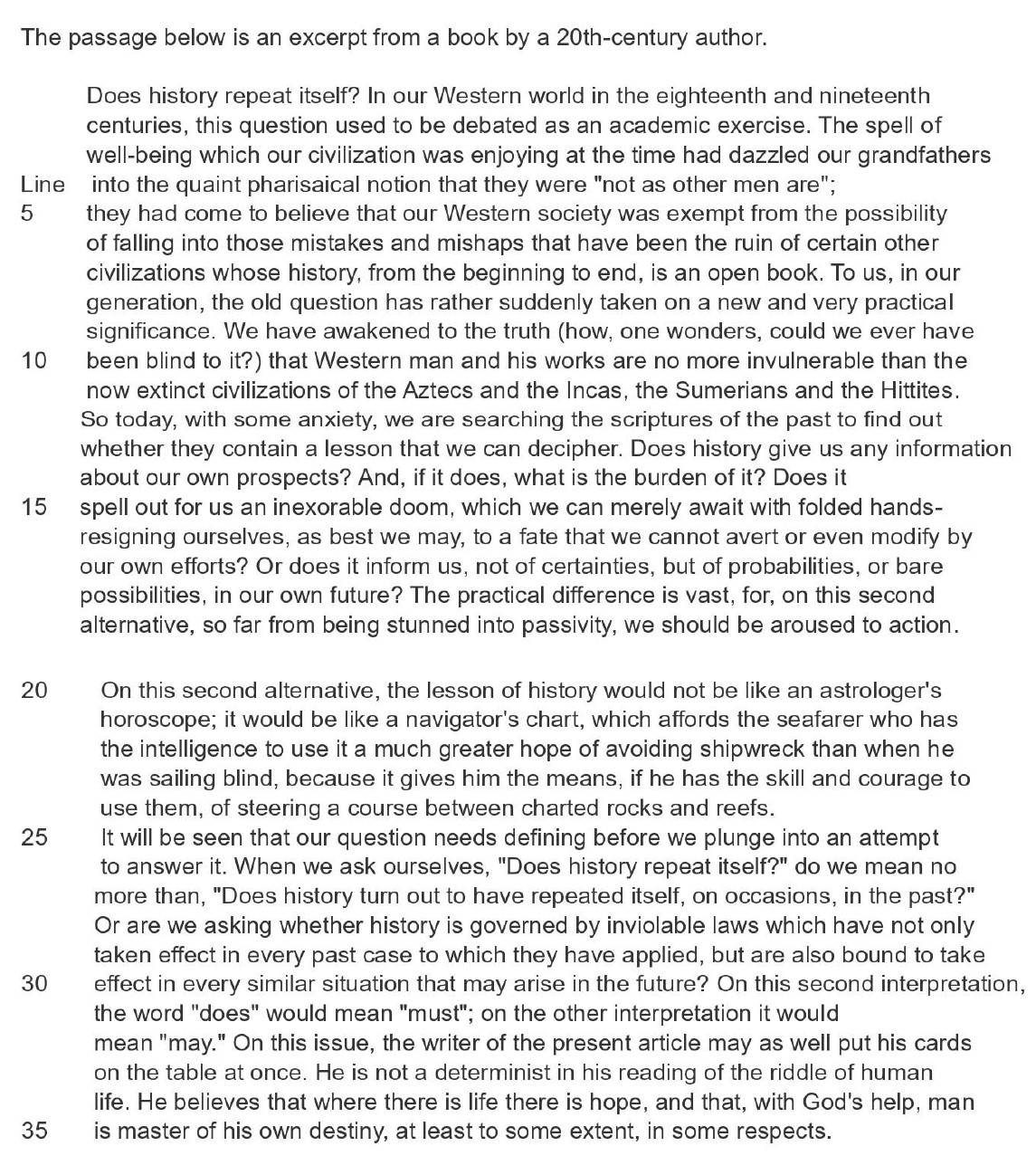
The phrase "To us, in our generation" (lines 7-9) exhibits which of the following rhetorical shifts? The author briefly touches on our ancestors' perspectives on whether history repeats itself early in the section. The author starts to give a more current viewpoint with this clause.
All of the following rhetorical devices are present in the first paragraph's final 20–24 lines, WITH the exception of
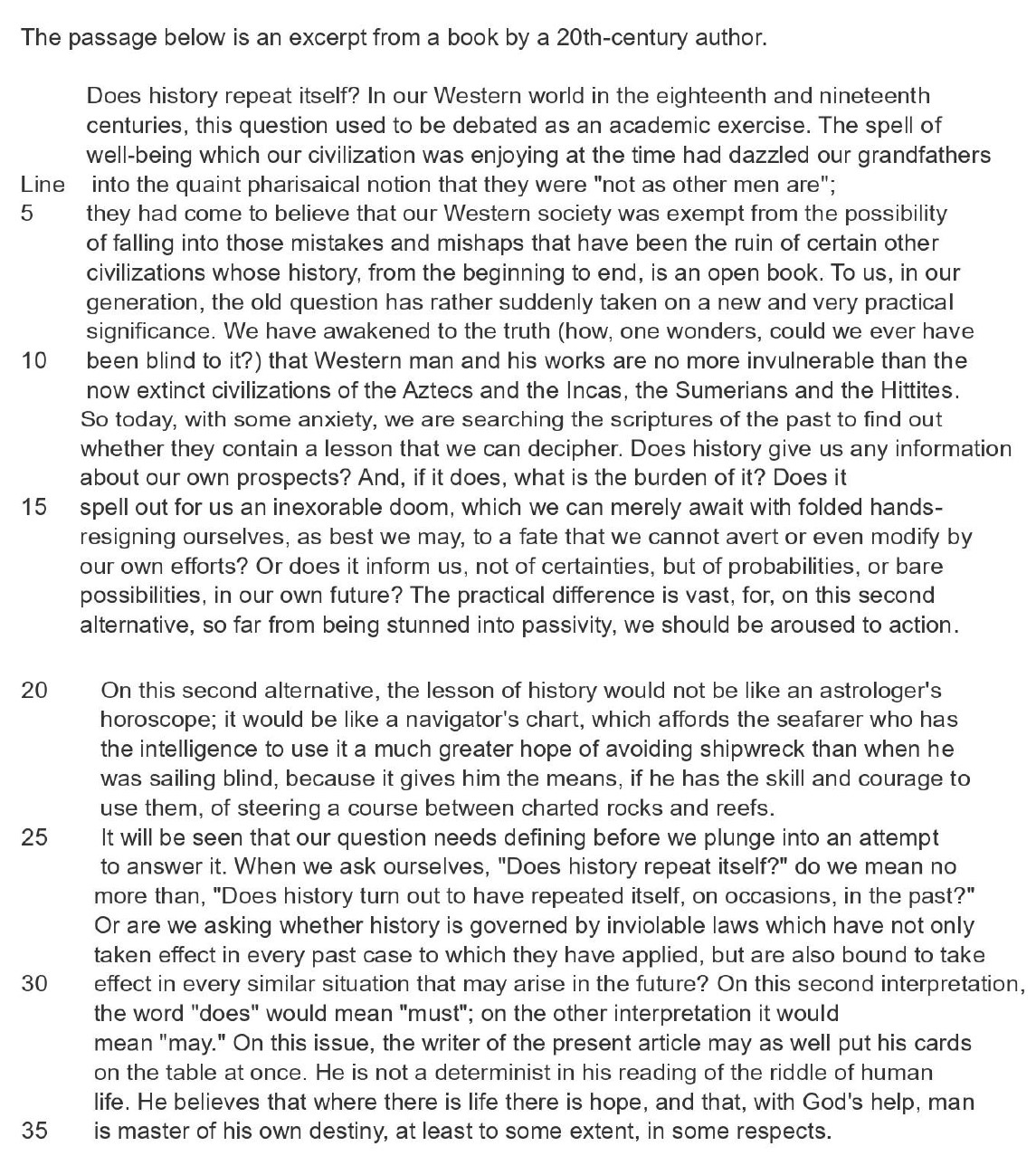
An illustration of an antithesis is seen in lines 17–18. Lines 21–24 examine a navigator's chart within the framework of a lengthy simile. The expression "charted rocks and reefs" is metaphorical. Alliteration can be found in word combinations like "probabilities/possibilities" and "rocks/reefs."
"Grandfathers" (lines 3-4) most likely refers to all of the following, WITH THE EXCEPTION OF
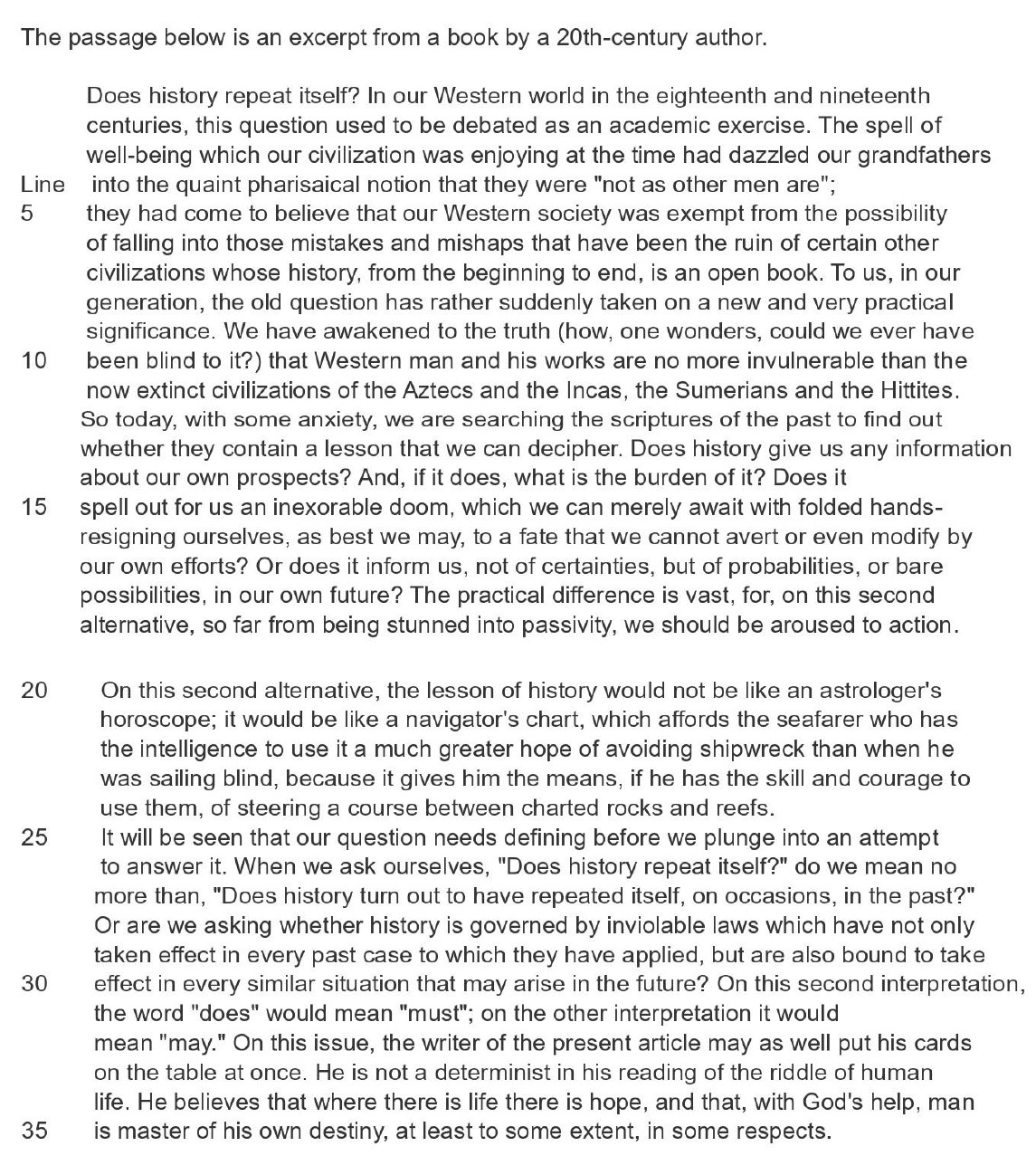
The term "grandfathers" in this sense refers to persons who lived in the 18th and 19th centuries who may have occasionally discussed whether history repeats itself, but who convinced themselves that they were special and were therefore exempt from the lessons that history teaches. The author's real grandfathers are neither mentioned or alluded to in the paragraph.
Which of the following is the term "this second alternative" (line 20) referring to?
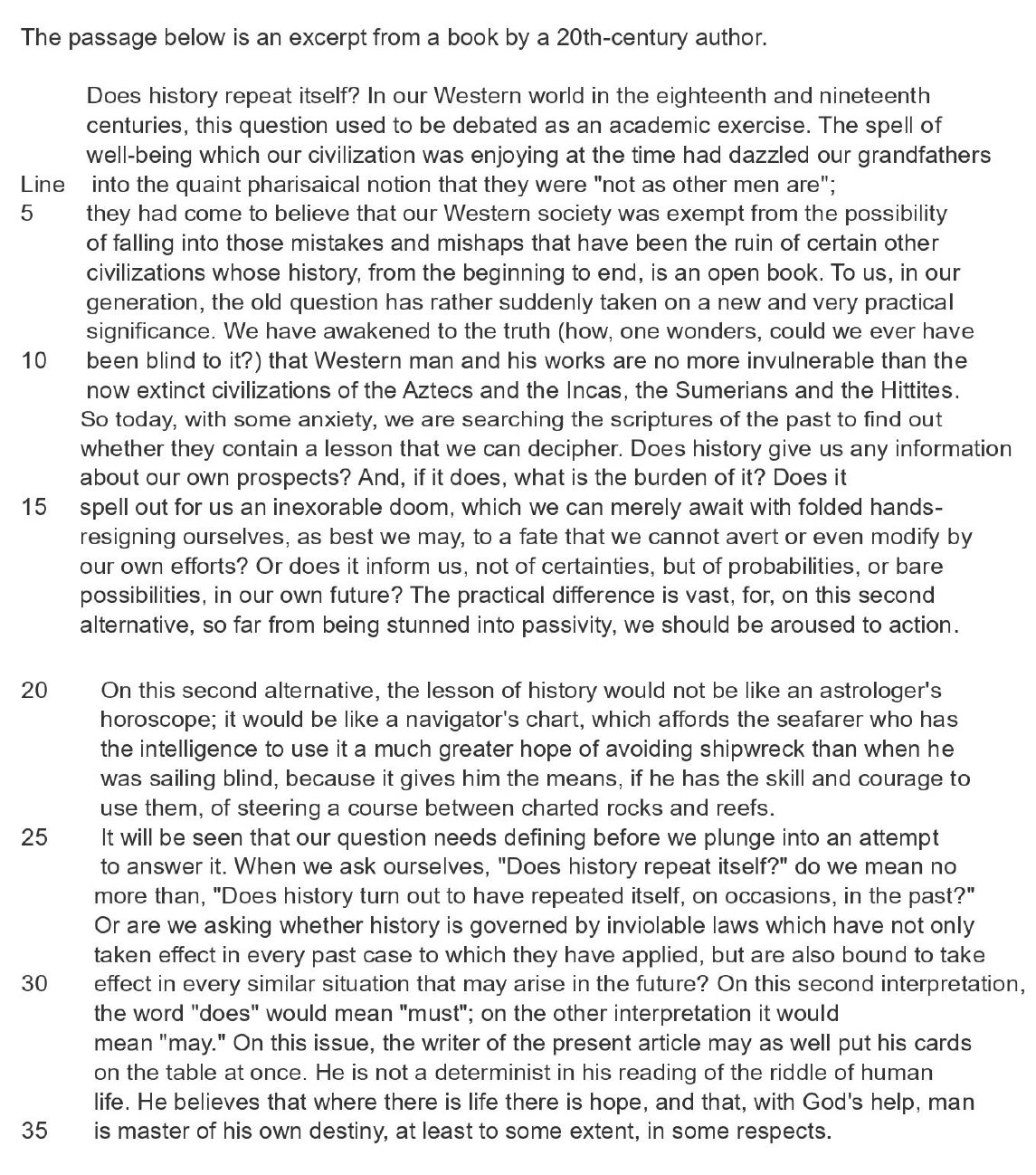
The "second alternative" refers to our capacity to predict the future by looking at the past.
All of the following descriptions EXCEPT one fit the author of the paragraph
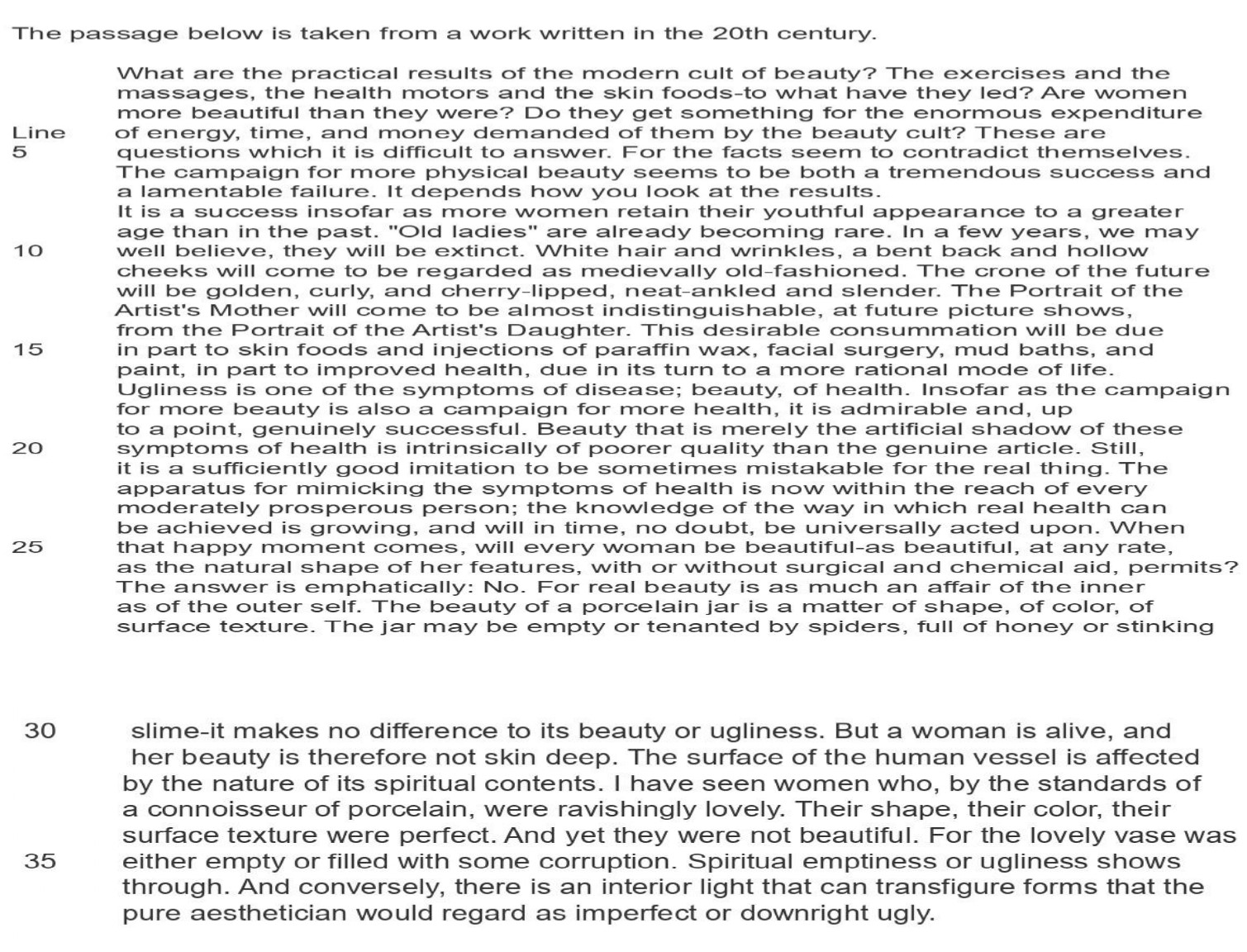
The passage's structure and substance demonstrate that the author possesses all the qualities stated, with the exception of scientific objectivity.
It is easiest to characterize the phrase "the surface of the human vessel is altered by the nature of its spiritual contents" (lines 32–33) as follows:
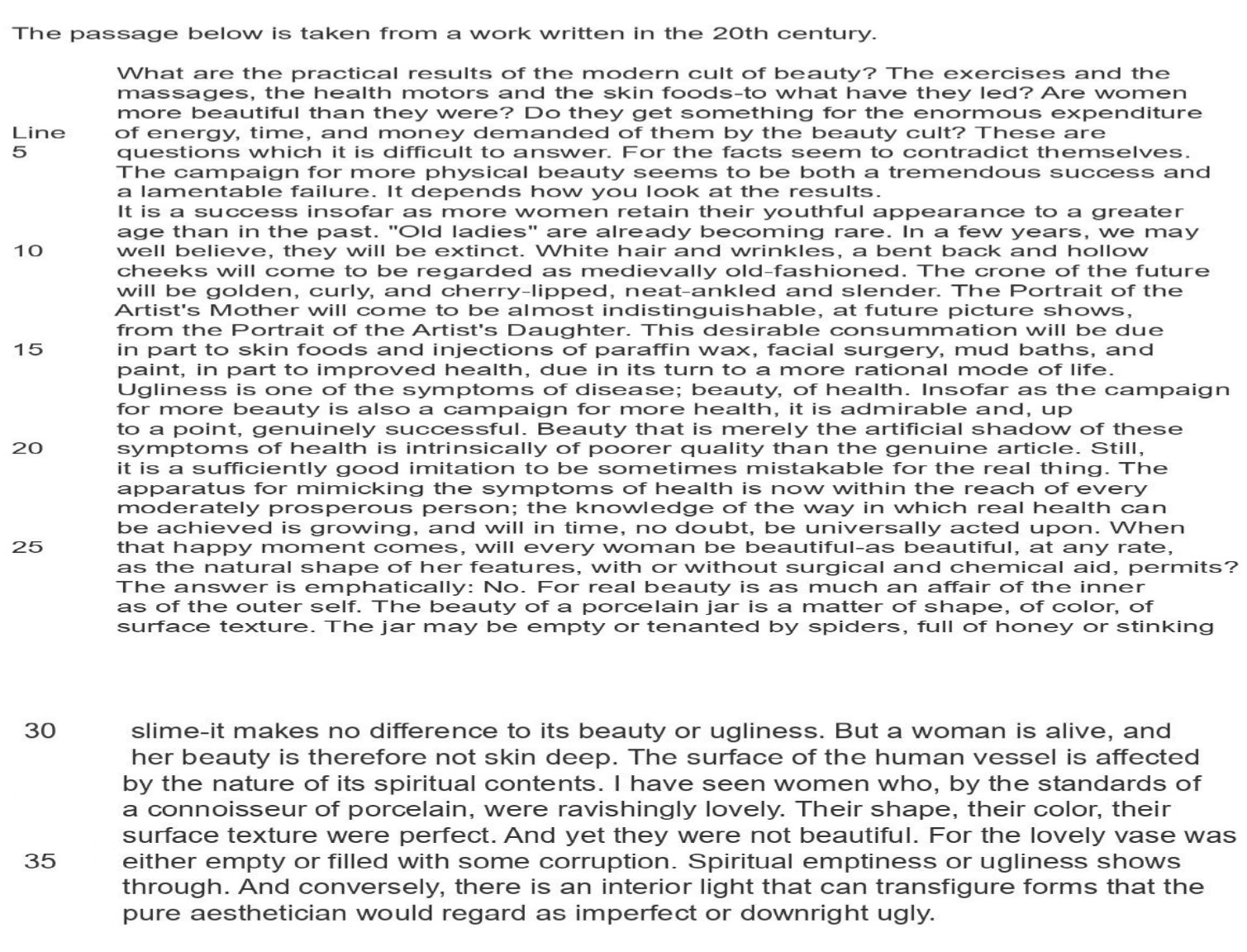
The assertion is a clear, well-thought-out, and memorable concept in its context. As a result, it qualifies as an epigram.
Old ladies are becoming more and more scarce, and the main rhetorical device employed to support this claim is
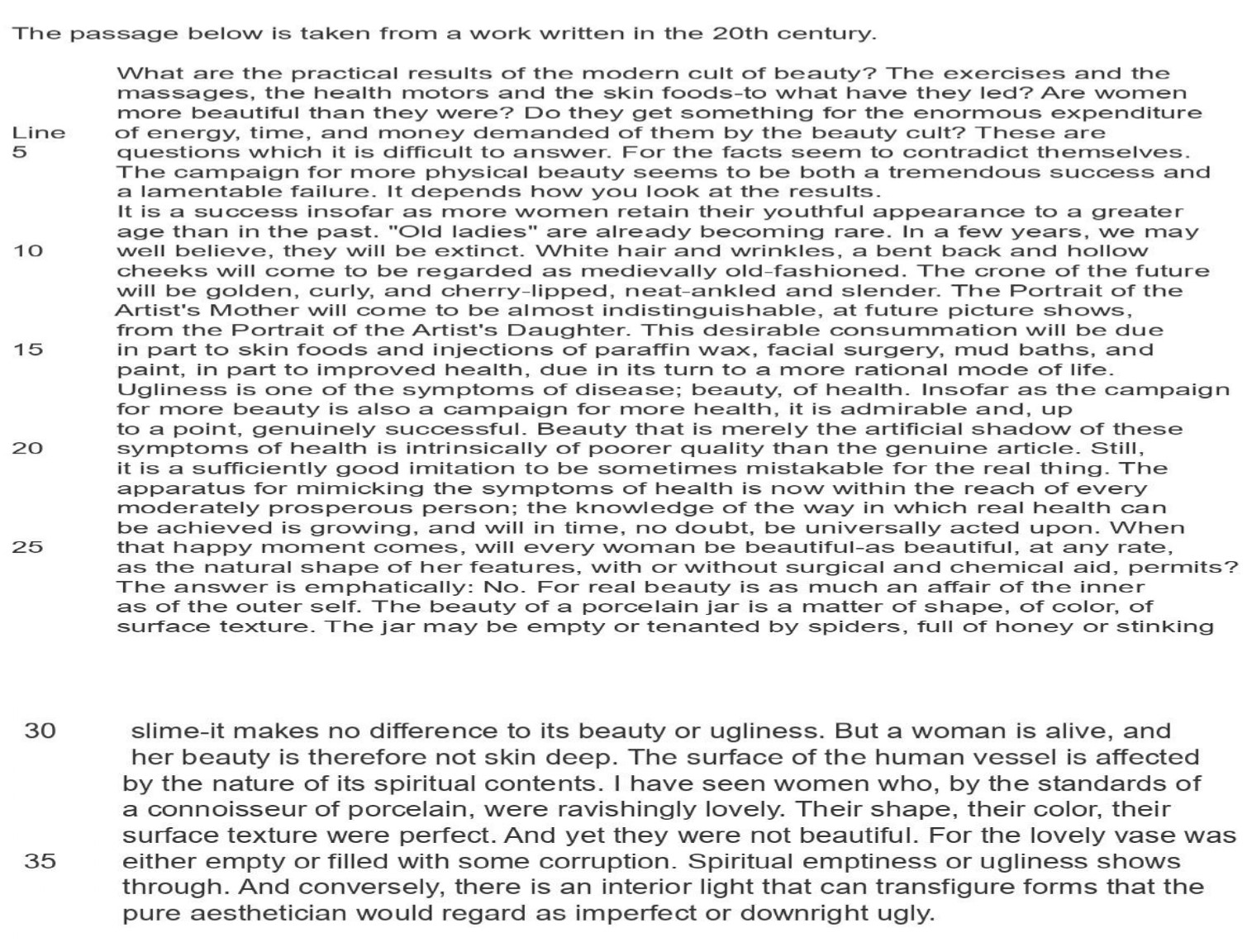
There are several examples of how women's look has changed that are expressed in similarly formatted phrases that start with the grammatical subject and the verb "will be."
Of the following, which is the most likely to be a purposeful exaggeration?
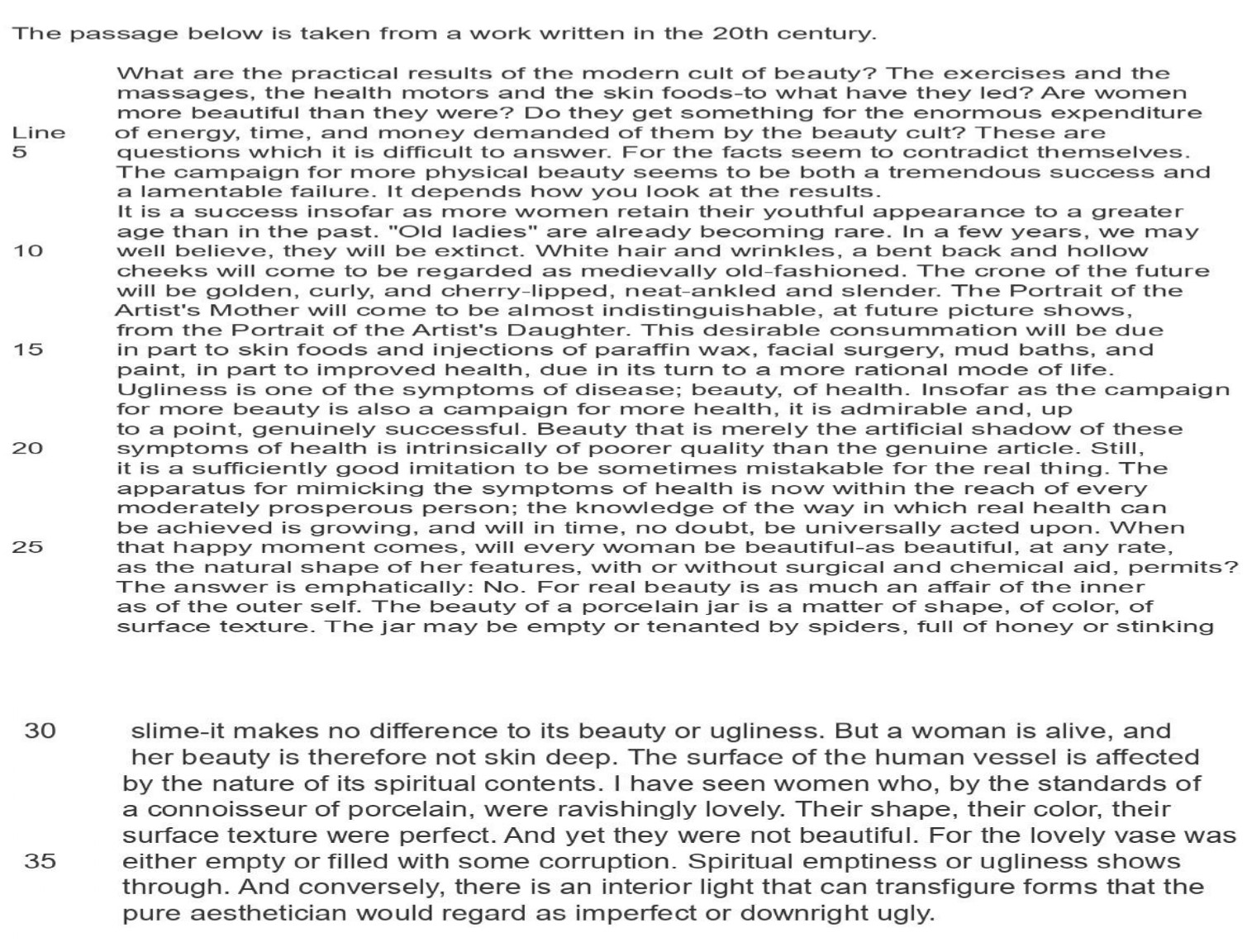
The idea that "old ladies" will go extinct is exaggerated. In fact, the author contradicts the notion by saying that while the traits normally associated with aging women will become "old fashioned," they won't entirely vanish in the following phrase. The author's point—that the cult of beauty is progressively altering women's general appearance—is made stronger by the exaggeration.
The author's observation in parenthesis (lines 9–10) serves mostly as a
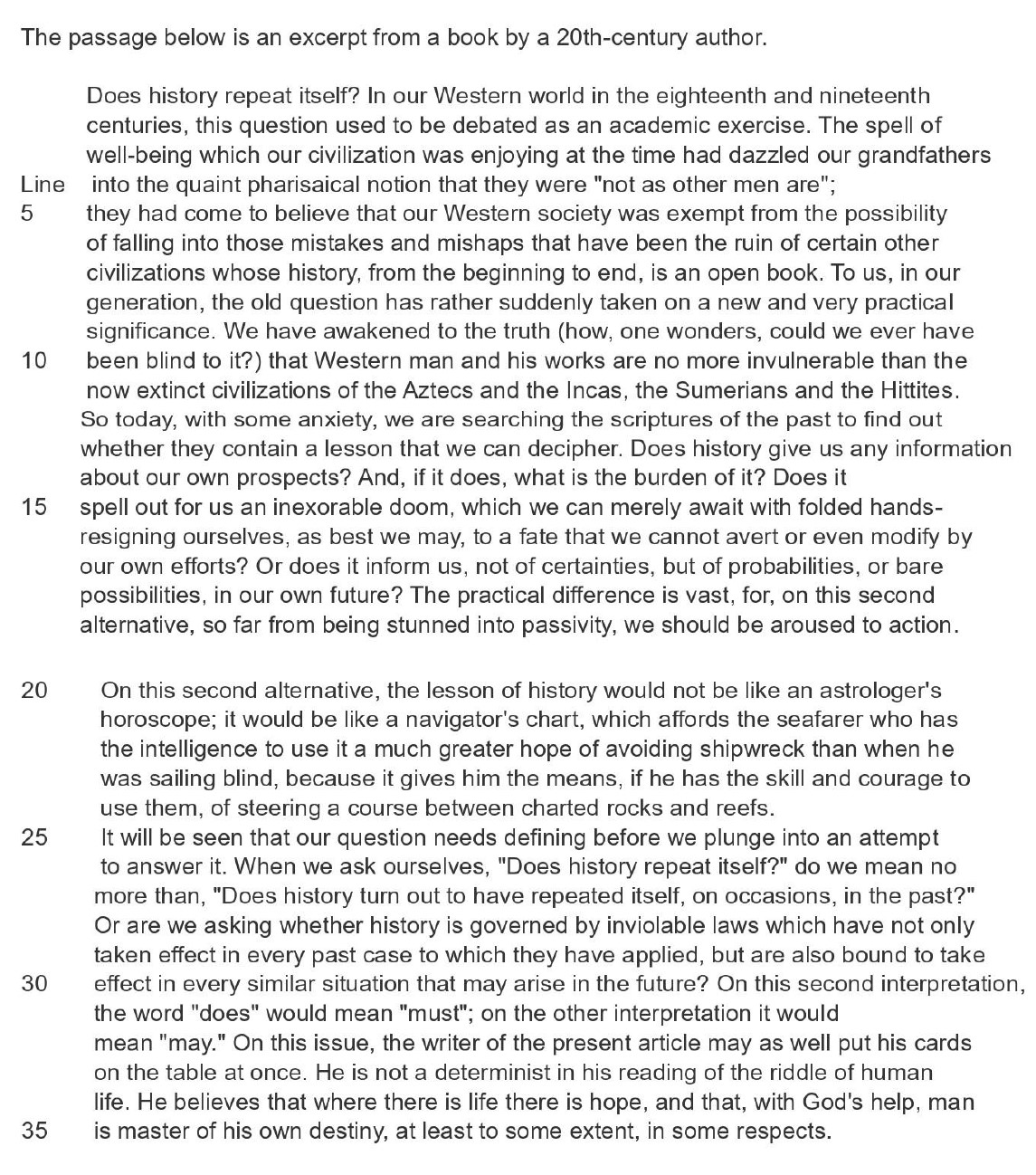
The author effectively criticizes himself and his fellow historians for their historical pessimism by posing the question in parenthesis. In comparison to the debate that comes before and after it, the inquiry has a very different tone that is much more casual and personal.
The passage's author can be best described as someone who
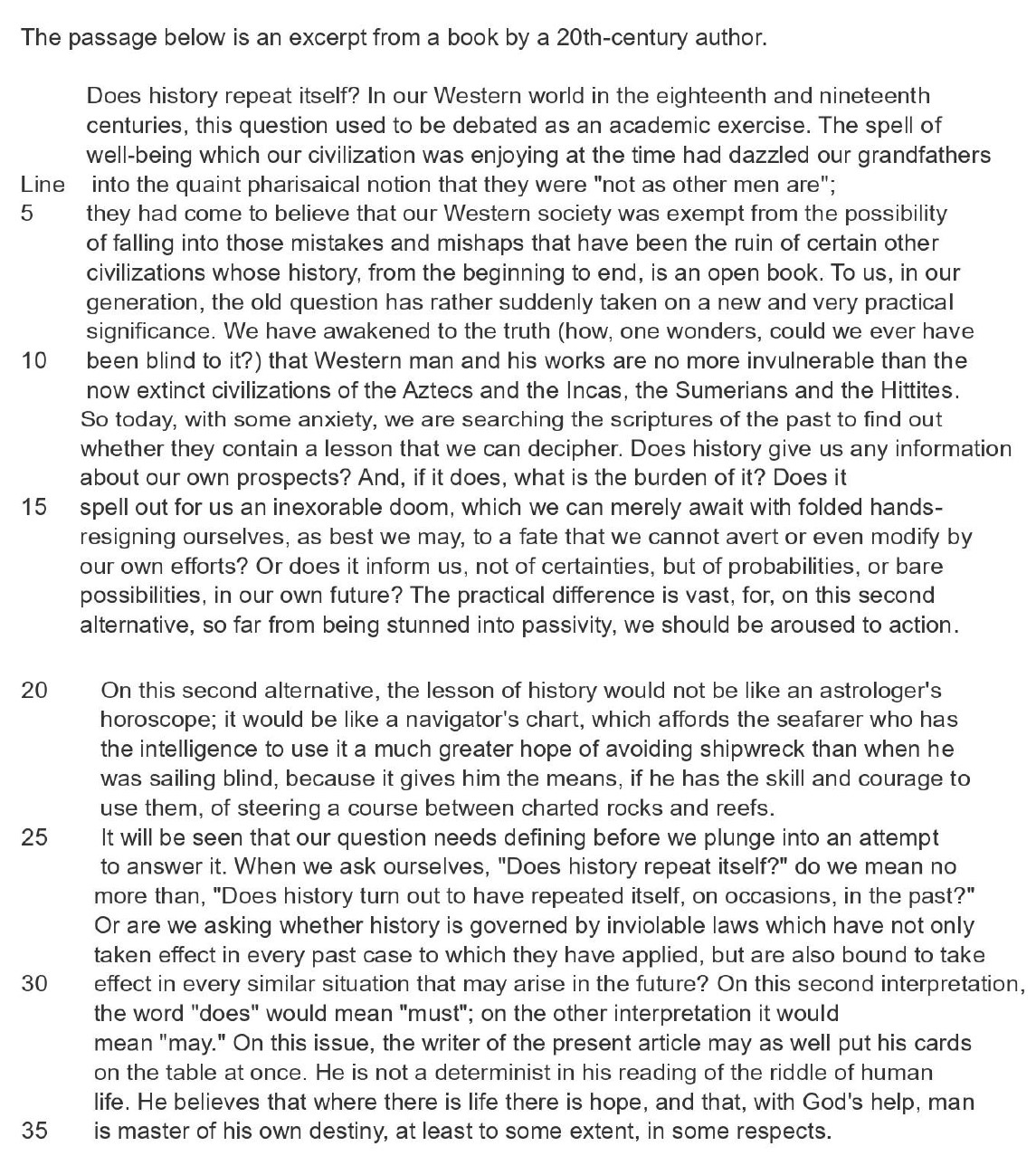
A theoretician, the author. He muses about how much we may wisely apply and gain from the teachings of history throughout the passage.
The opening sentence sets the tone for what the rest of the chapter will be like.
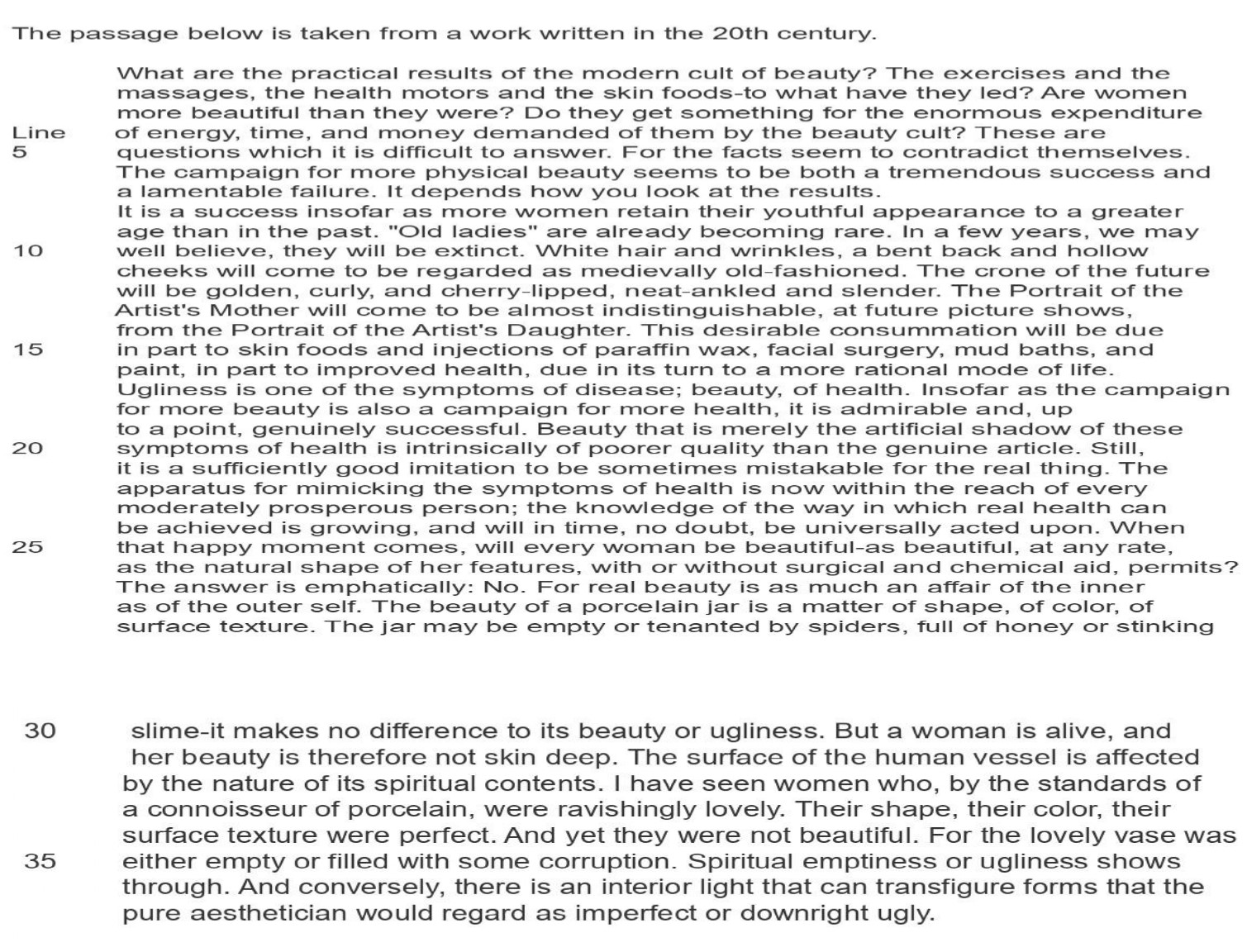
The first paragraph's unanswered questions and expressions of uncertainty (such as "it depends" and "difficult to answer") set the stage for a conversation that considers all sides of the argument.
The best meaning for the word "scriptures" in line 12 is
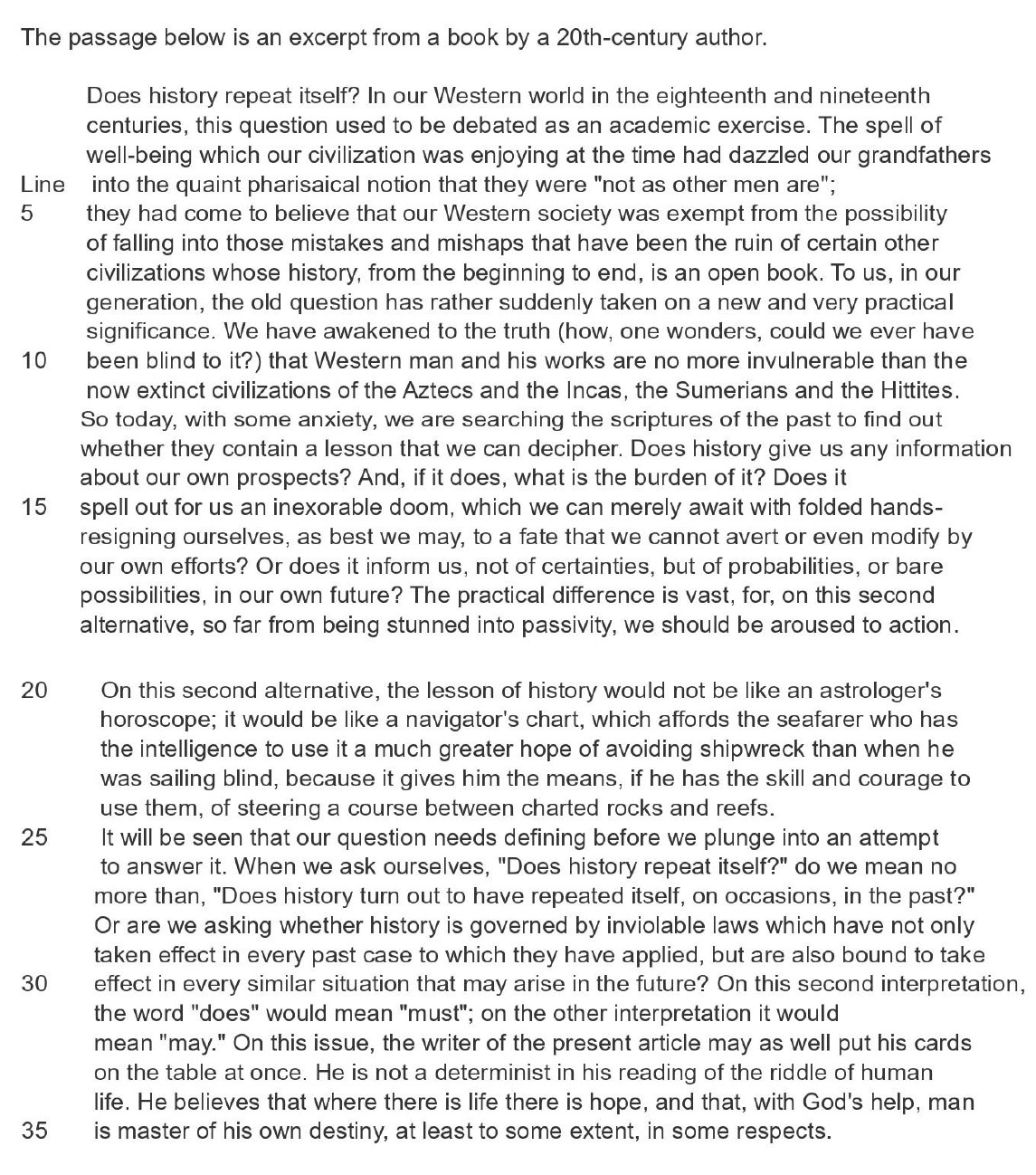
The only information we have about ancient civilizations comes from the ruins that have been left behind. We deduce teachings with the weight of scripture from the ruins.
As employed in the passage, the word "cult" (line 1) refers largely to
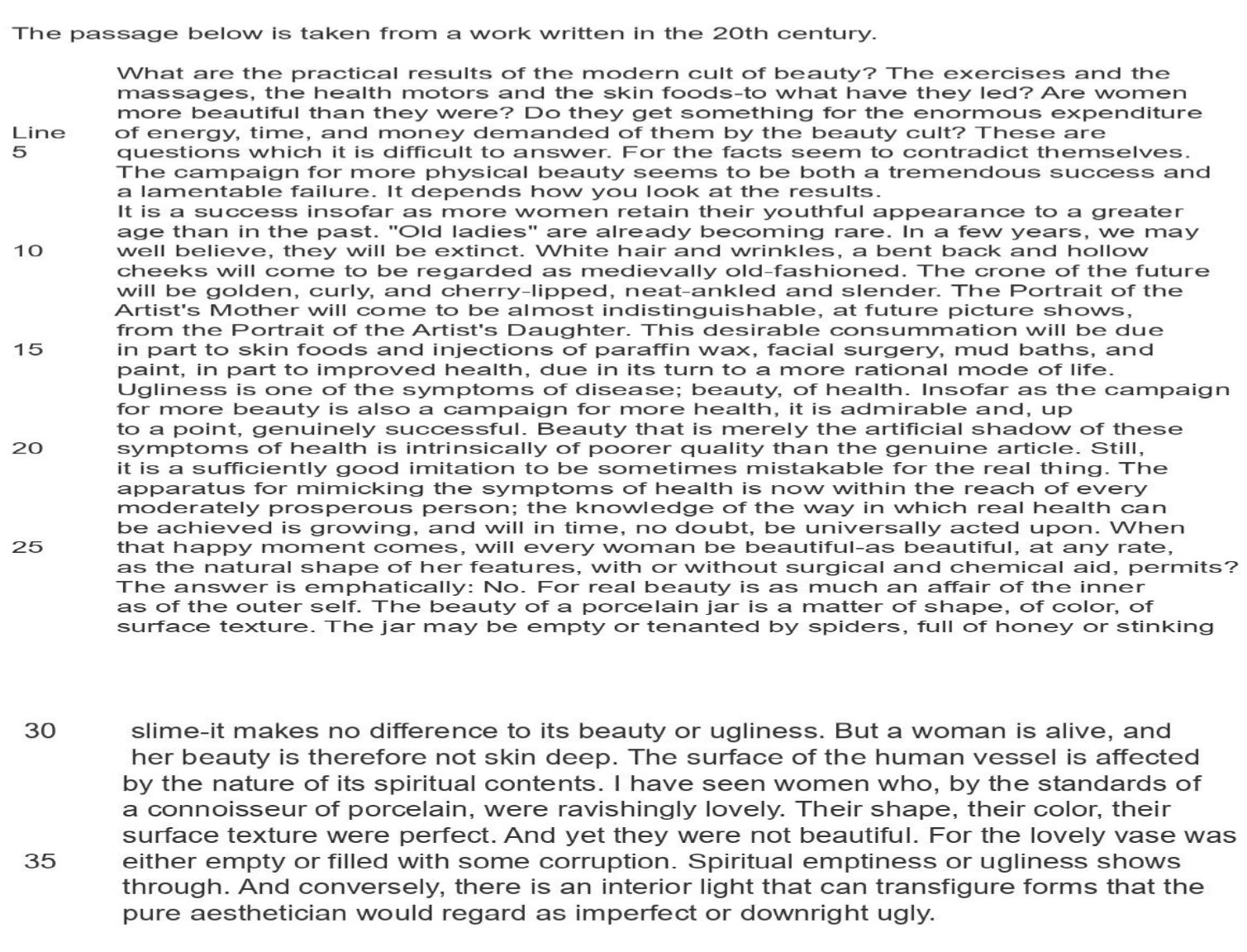
The passage's second sentence hints at the author's meaning. People who belong to a "cult" are extremely devoted—almost obsessed—with a certain idea or set of practices; in this case, it is the need to produce, maintain, or revive physical beauty.
The rhetorical device most prominently used in the development of the last paragraph (lines 28–38) is
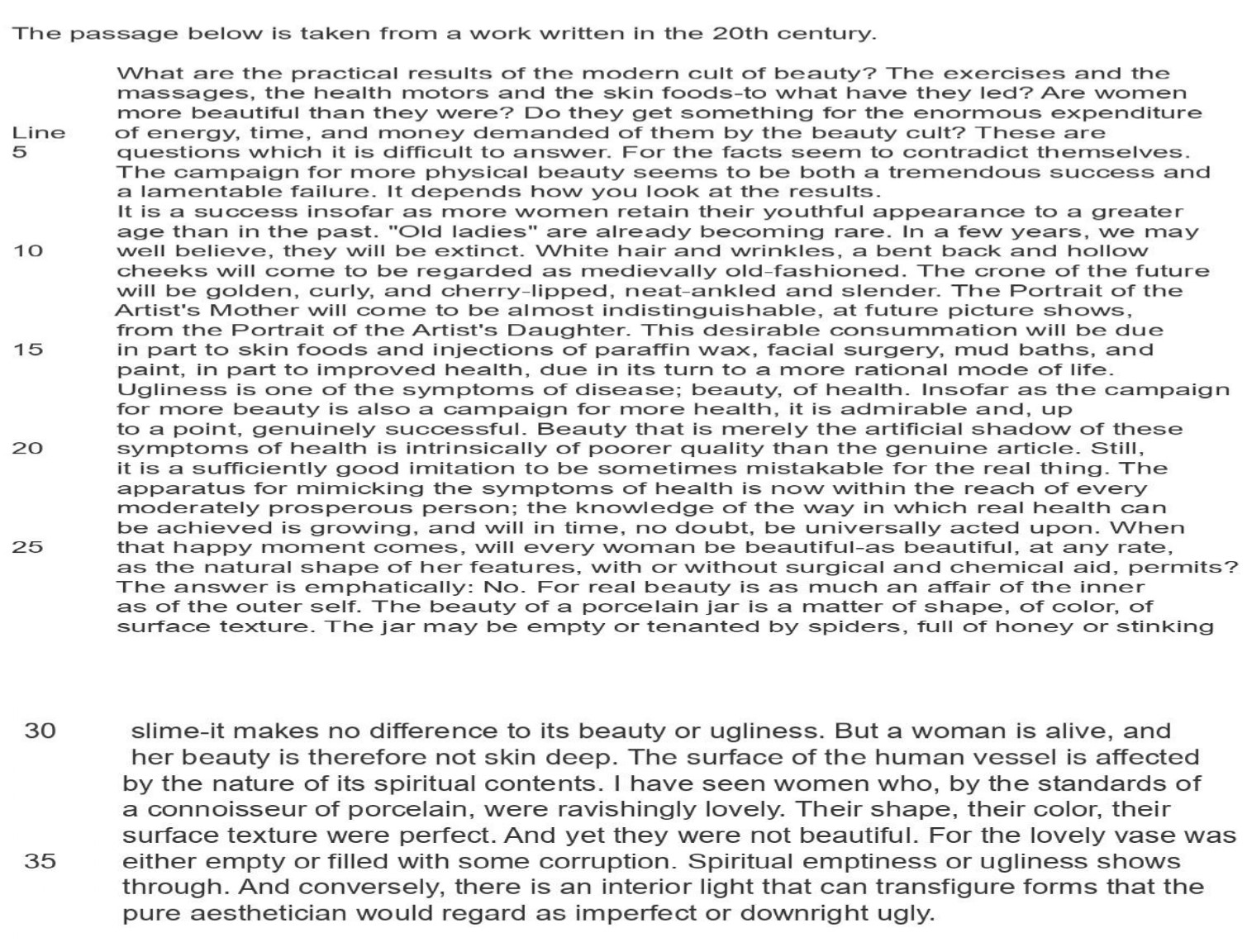
The analogy that contrasts a woman's attractiveness with the beauty of a porcelain jar takes up the most of the text.
The tone of "crone of the future" (line 11) is best exemplified by which of the following?
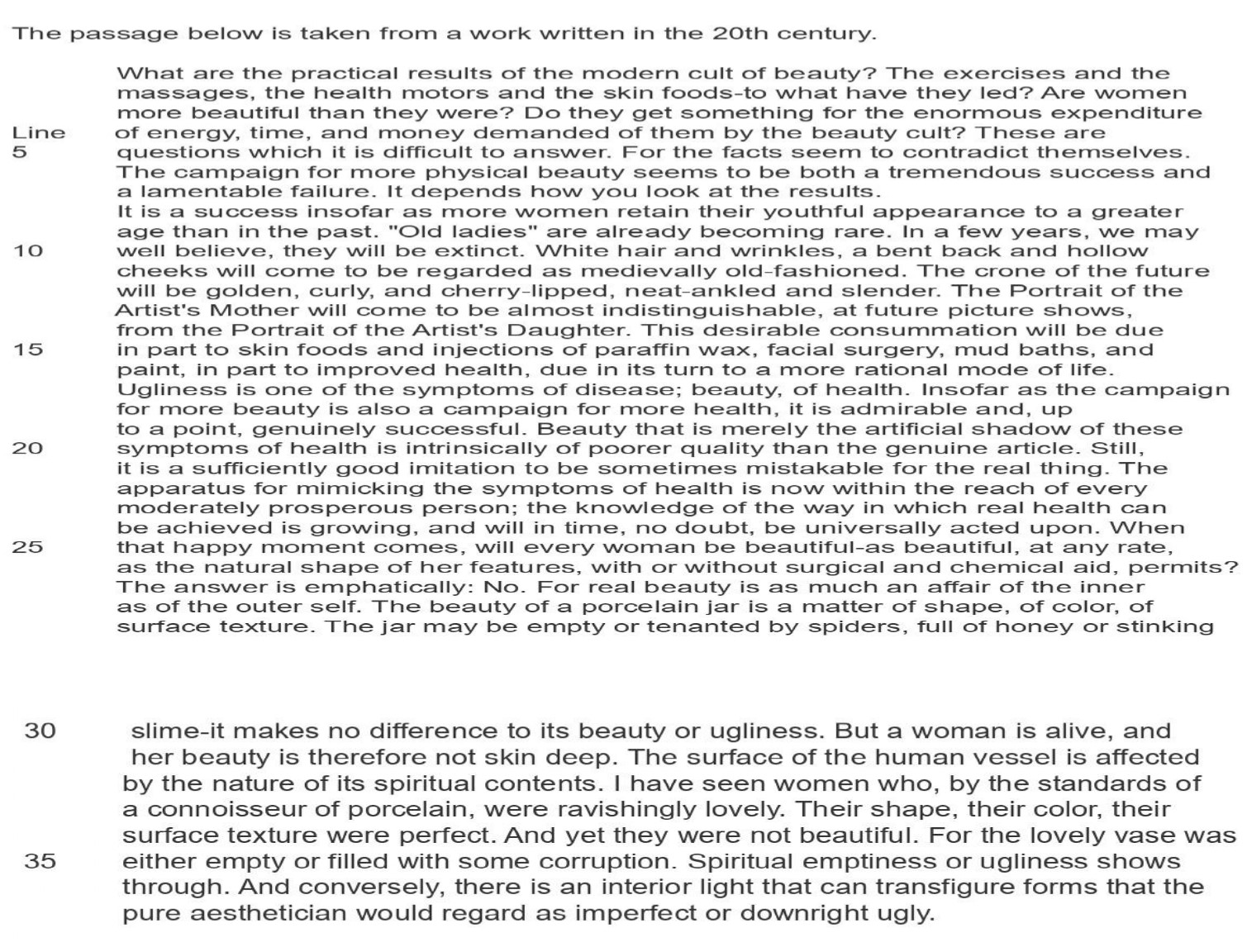
The satirical designation "crone of the future" is somewhat akin to awards like "serial killer of the year" or "airhead of the month."
"An open book" is a reference in line 7 to
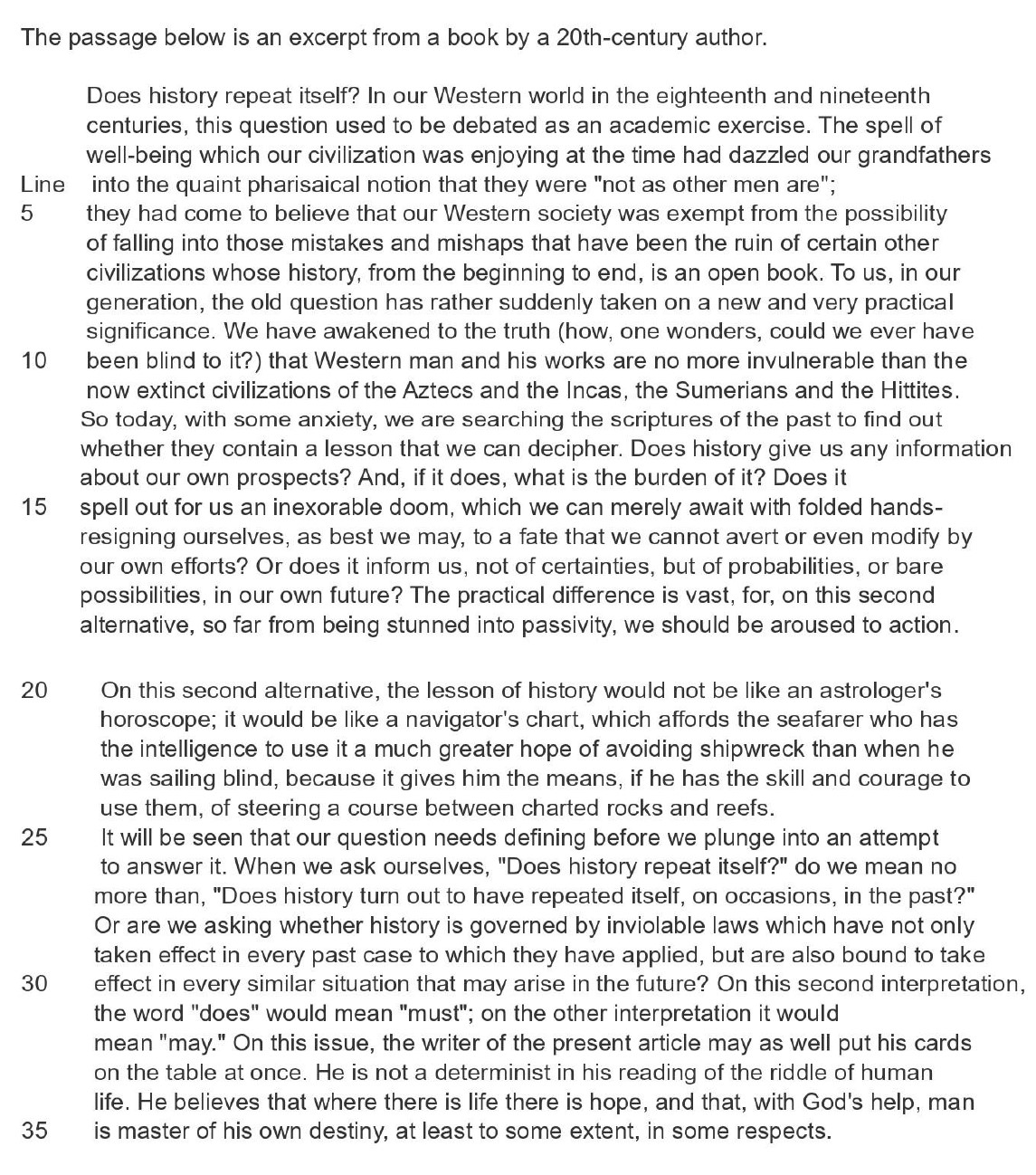
Readers can deduce the lessons that history teaches because the "open book" documents the errors of earlier civilizations. However, the term "open book" itself relates to the history of earlier civilizations, particularly the errors and blunders that resulted in their disintegration.